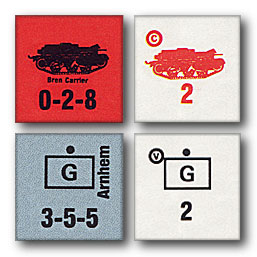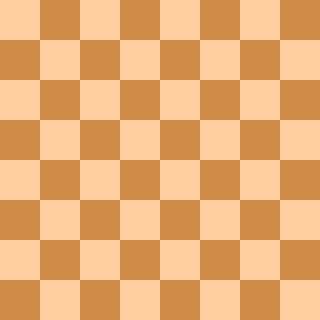 W
WAn adventure board game is a board game in which a player plays as a unique individual character that improves through gameplay. This improvement is commonly reflected in terms of increasing character attributes, but also in receiving new abilities or equipment.
 W
WAn Amerigame, short for American-style board game, is a loose category of tabletop game that generally features a prominent theme, encourages direct conflict between players, and has a significant degree of luck. It is distinguished from a Eurogame, or German-style board game, in that American-style games often have longer playtimes and mechanics designed to suit the theme. Not all games from the United States fall under this category. Many of the famous games were invented outside USA. Party games like Codenames, Cooperative board games like Pandemic and Family-friendly board games with simpler or abstract rules like Scrabble and Chess are usually excluded.
 W
WA checkerboard or chequerboard is a board of chequered pattern on which draughts (checkers) is played. Most commonly, it consists of 64 squares (8×8) of alternating dark and light color, typically green and buff, black and red, or black and white. An 8×8 checkerboard is used to play many other games, including chess, whereby it is known as a chessboard. Other rectangular square-tiled boards are also often called checkerboards.
 W
WA chessboard is the type of gameboard used for the game of chess, on which the chess pawns and pieces are placed. A chessboard is usually square in shape, with an alternating pattern of squares in two colours. Though usually played on a surface, a tangible board is not a requirement to play the game. Traditionally wooden boards are made of unstained light and dark brown woods. To reduce cost, many boards are made with veneers of more expensive woods glued to an inner piece of plywood or chipboard. A variety of colours combinations are used for plastic, vinyl, and silicone boards. Common dark-light combinations are black and white, as well as brown, green or blue with buff or cream. Materials vary widely; while wooden boards are generally used in high-level games; vinyl, plastic, and cardboard are common for less important tournaments and matches and for home use. Decorative glass and marble boards are rarely permitted for games conducted by national or international chess federations. When they are permitted, they must meet various criteria
 W
WCooperative board games are board games in which players work together to achieve a common goal, the result being either winning or losing as a group. As the name suggests, cooperative games stress cooperation over competition. This type of board game attracts people who enjoy the social aspect of games and is a good way to get new board game players interested in the hobby. Either the players win the game by reaching a pre-determined objective, or all players lose the game, often by not reaching the objective before a certain event ends the game.
 W
WA counter is usually a small cardboard square moved around on the map of a board wargame to represent relevant information or determine certain things. The first wargame based on cardboard counters was War Tactics or Can Great Britain Be Invaded? invented by Arthur Renals of Leicester in 1911. The first wargame bringing counters to a mass-market was Tactics, invented by Charles S. Roberts in 1952. Traditional wargames typically have hundreds of counters. Squad Leader had counters of different sizes: 520 1⁄2-inch counters and 192 5⁄8-inch, with the different sizes used for different purposes.
 W
WA Eurogame, also called a German-style board game, German game, or Euro-style game, is a class of tabletop games that generally has indirect player interaction and abstract physical components. Eurogames are sometimes contrasted with American-style board games, which generally involve more luck, conflict, and drama. They are usually less abstract than chess or Go, but more abstract than wargames. Likewise, they generally require more thought and planning than party games such as Pictionary or Trivial Pursuit.
 W
WA Games table desk is an antique desk form which combines the type of surface required for writing with a surface etched or veneered in the pattern of a given board game. It also provides sufficient storage space for writing implements and a separate space for storing game accessories such as counters. It is often called a "games table" or game table, which leads to confusion with pieces of furniture which are built specifically for gaming only, with no intention or provision for use as a desk.
 W
WPlayers of the game of Go often use jargon to describe situations on the board and surrounding the game. Such technical terms are likely to be encountered in books and articles about Go in English as well as other languages. Many of these terms have been borrowed from Japanese, mostly when no short equivalent English term could be found. This article gives an overview of the most important terms.
 W
WA hex map, hex board, or hex grid is a game board design commonly used in wargames of all scales. The map is subdivided into a hexagonal tiling, small regular hexagons of identical size.
 W
WIn economics, perfect information is a feature of perfect competition. With perfect information in a market, all consumers and producers have perfect and instantaneous knowledge of all market prices, their own utility, and own cost functions.
 W
WThe pie rule, sometimes referred to as the swap rule, is a rule used to balance abstract strategy games where a first-move advantage has been demonstrated. After the first move is made in a game that uses the pie rule, the second player must select one of two options:Letting the move stand. The second player remains the second player and moves immediately. Switching places. The second player becomes the first-moving player, and the "new" second player then makes their "first" move.
 W
WPlay money is noticeably fake bills or coins intended to be used as toy currency, especially for classroom instruction or as a marker in board games such as Monopoly, rather than currency in a legitimate exchange market. Play money coins and bills are collected widely. They can be found made from metals, cardboard or, more frequently today, plastic. For card games such as poker, casino tokens are commonly used instead.
 W
WRunning-fight games are board games that essentially combine the method of race games and the goal of elimination-based games such as chess or draughts. Like race games, pieces are moved along linear tracks based on the fall of dice or other lots; but like chess, the object is to capture opponent pieces.
 W
WIn board wargames, a zone of control (ZOC) is the area directly adjacent to certain combat forces that affects the movement and actions of enemy combat units. In hexagonal tiled maps, a combat unit's zone of control is the six hexagons adjacent to the hexagon occupied by a unit.